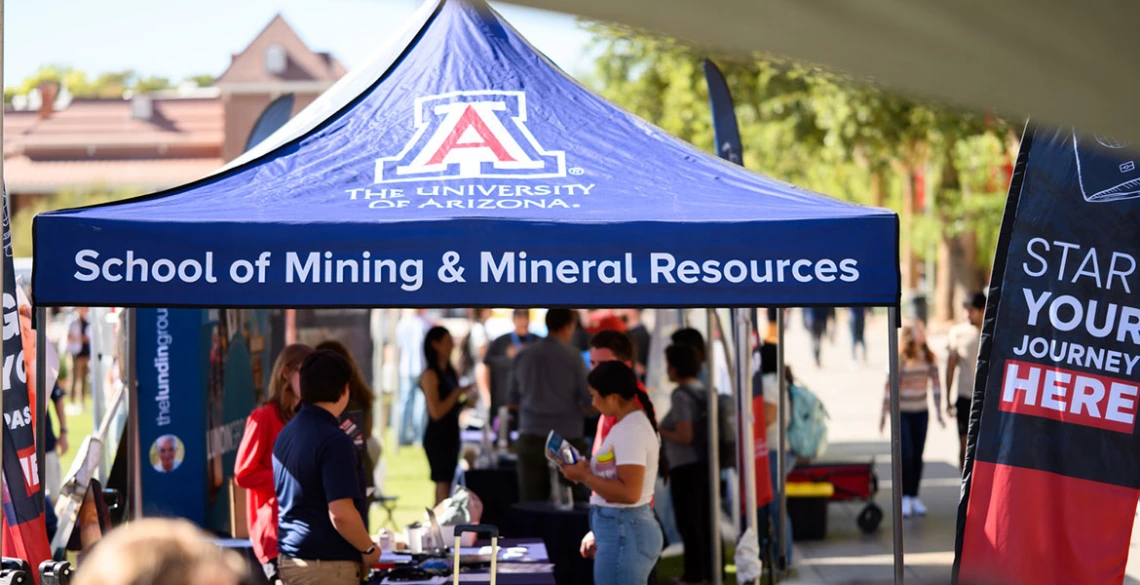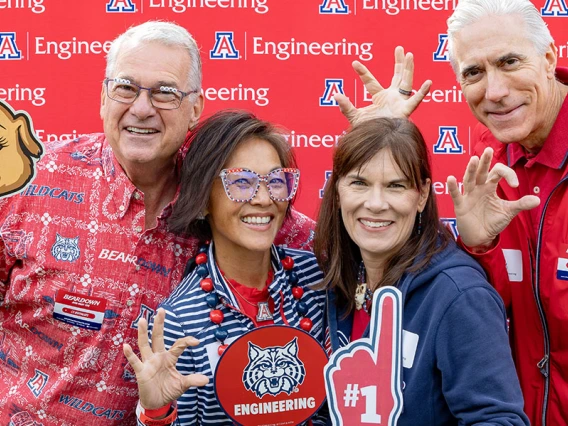Timothy Snider lauds technology, skills and safety at 2024 Lacy Lecture
‘Copper will continue to thrive,’ says the mining industry veteran, speaker for the University of Arizona W.C. Lacy Distinguished Lecture Series.

Students learn about mining career paths at the University of Arizona. Lacy Lecture speaker Timothy Snider believes this generation of students is well-prepared, “and the industry will certainly need them.”
Timothy Snider began his career more than 50 years ago as an underground mine laborer. He rose to become president and chief operating officer of Phelps Dodge, one of the world’s largest copper producers.
The speaker for the 19th annual W.C. Lacy Distinguished Lecture shared insights on the evolving copper market, his company’s flagship project in Botswana, and the future challenges and opportunities for incoming engineers.
Snider’s lecture, “The Evolution of a Copper Mine,” highlighted both personal and professional lessons that have shaped his noteworthy career.
Snider, a University of Arizona alumnus from the late 1960s, underscored the importance of education and hands-on experience in shaping his career trajectory.
“The early experience I gained, combined with a strong educational foundation, set me on a path to leadership,” he said.
New technologies and approaches for copper
Snider explained that copper demand is outpacing supply, a trend he expects to continue.
“We’re entering a period of copper shortages, and the reasons are clear: population growth, the sustainable energy transition, and technological advancements are driving demand, but new production lags,” he said.
Emerging technologies, including artificial intelligence, are affecting mining and the copper market, Snider said. While acknowledging market uncertainties, he expressed optimism about the mineral’s long-term prospects, noting that technological advances could increase efficiency and reduce demand in unexpected ways.
“Nothing is risk-free,” he said, “but through market understanding and innovation, the copper industry will continue to thrive.”
A highlight of Snider’s lecture was the story of Cupric Canyon Capital’s project in Botswana’s Kalahari Copperbelt, where the company acquired a major copper mine and concentrator.
Snider discussed the novel ways the company is tackling challenges, including financing and technical execution.
“Challenging times often lead to innovation,” he said. “During low-price periods, we’ve seen breakthroughs that reshape mining, from modular mining to large-scale leaching.”
The project, he noted, has provided investor returns and created over 1,600 jobs in its community. He emphasized collaboration and the role of dedicated teams in the success of such complex projects.
The next chapter
Snider spoke about the significance of collaboration, safety and mentorship in the industry and in mining education. His reflections offered a reminder that today’s students will shape the industry’s future.
“Their technical skills, commitment to safety, and capacity for innovation will drive the next chapter of this industry,” he said.
He also underscored the importance of safety and sustainability in mining, lauding the industry for significantly reducing injury rates. Referencing International Council on Mining and Metals data, Snider highlighted how the total recordable injury rate has halved over the past 12 years.
“Mining is much safer than people might think,” he said. “Students entering the field can rest assured that safety is taken very seriously.”
The annual W.C. Lacy Distinguished Lecture series honors Willard C. “Bill” Lacy, the first head of the combined Department of Mining and Geological Engineering at the University of Arizona. The series features renowned speakers who contribute significantly to mining, sharing personal experiences and best practices with future engineers.



